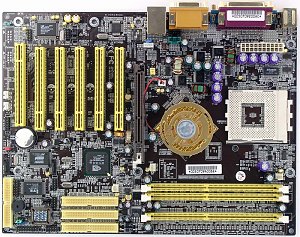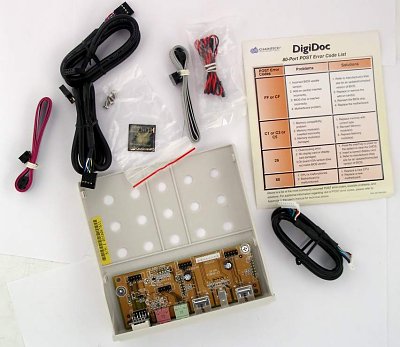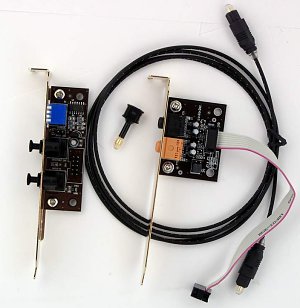Chaintech
7NJS (NVIDIA nForce2) Mainboard (Zenith series)
|

The
release of the Apogee series with its nonstandard components and extensive overclocking
capabilities was a real breakthrough for Chaintech. The today's board - the first
of the new Zenith series - is for those who want to get the highest possible speed,
as well as a rich bundle of accessories for such a good sum of money. By the way,
there are no Body Theater headphones. Accessories:

The layout has the following drawbacks: the audio-ins and power supply
connector are located between the CPU socket and the back panel, the FDD is next
to the left edge, IDE connectors are behind the PCI slots. When a video card is
installed it's difficult to handle the memory modules in the DIMM slots. It can
be difficult to reach some jumpers when the board is already installed. Their
functions are shown on the textolite. The 2-channel switching voltage
regulator incorporates 8 capacitors of 2200 uF and 3 of 1500 uF. The
following controllers are integrated: - audio controller based on
the C-Media CMI8738/PCI-6ch-MX chip supporting 5.1 audio systems and having connectors
for front audio inputs/outputs and for SPDIF;
- network controller
based on the chipset's capabilities and supporting 10BaseT/100BaseTX;
-
IDE RAID controller based on the Promise PDC20376 chip supporting RAID 0 and 1
on the ATA133 and SATA150 protocols.
Non-unsoldered connectors:
a connector for 2 COM ports (the ports are located on the back panel) - they will
probably be provided in a board with an integrated graphics core. The
system monitoring is supported by the ITE IT8712F-A chip. What is controlled:
- processor voltage, AGP bus and memory, +2.5, +3.3, +5 and +-12 V, VBAT;
-
speed of 2 fans;
- temperatures of the processor (a built-in sensor)
and the board (a built-in sensor).
There are 2 connectors for adjustable
and 2 for unadjustable connection of fans (one of them is connected to a fan on
the heatsink of the chipset's north bridge). Brief characteristics
of the board: memory slots - 3 DDR SDRAM; expansion slots - AGP/ 5 PCI/ ACR;
I/O ports - 2 COM/ LPT/ 2 PS/2/ 6 USB 2.0; dimensions - 305x230 mm.

Adjustment
can be carried out with:
| jumpers and switches | Jumper
to clear up the CMOS | | | Jumpers to fix the
FSB frequency | 100, 133, 166 MHz | | Jumper
for starting up computer from a PS/2 keyboard | | | Jumpers
for starting up computer from USB keyboard | | | Jumper
to enable/disable the audio controller | | | BIOS
based on the AwardBIOS 6.00PG of Phoenix | Setup of memory timings | + | CAS
Latency, T (RAS), T (RCD), T (RP) | | Setup of memory frequency | + | By
SPD, Sync, 50%, 60%, 66%, 75%, 80%, 83%, 120%, 125%, 133%, 150%, 166% and 200%
of FSB | | Setup of AGP bus | - | |
| Setup of PCI bus | - | | | Changeable
scaler of AGP and PCI buses | + | AGP (PCIx2) = Auto,
50, 66, 67, 68, 69, 70, 71, 72, 73, 74, 75, 76, 77, 78, 79, 80, 81, 82, 83, 84,
85, 86, 87, 90, 93, 95, 97 and 100 MHz | | Manual assignment of
interrupts | + | | | Changeable FSB frequency | + | 100-200
MHz in 1, 2, 3 and 5 MHz steps | | Changeable CPU multiplier | - | |
| Changeable core voltage | + | 1.4-2.15 V in 0.025V
steps up to 1.85 V and then in 0.05 V steps | | Changeable memory
voltage | + | 2.7-3.2 V in 0.1V steps | | Changeable
chipset voltage | - | | | Changeable AGP
bus voltage | + | Default, 1.6-2.0 V in 0.1V steps |
We used the latest available version of the BIOS of 01.11.2002.
An excellent set of components, the best among modern boards, is supplemented
with a wide range of adjustable parameters and overclocking settings; the functions
are superb. This is one of the best boards for Socket A. Test results:
Write a comment below. No registration needed!
|
|









